Do you have a question about the Panasonic CS-PU9XKT and is the answer not in the manual?
Lists the specific model numbers for the indoor and outdoor units of the air conditioner.
Provides initial instructions for installers and customers, emphasizing keeping manuals for future reference.
Step-by-step guide on how to properly insert batteries into the remote control.
Instructions on how to set the clock on the remote control for accurate operation and timer functions.
How to turn the air conditioner on and off using the power button on the remote control.
Guide to choosing between AUTO, COOL, and DRY modes for desired comfort and efficiency.
Instructions on how to set the desired temperature using the TEMP UP and DOWN buttons.
Explains the meaning of WARNING and CAUTION symbols and their associated safety actions.
Critical safety instructions for the indoor and outdoor components of the air conditioner.
Safety measures to follow when using the air conditioner's remote control, especially with children.
Precautions related to the power cord, plug, and electrical connections to prevent hazards.
Safety advice on unit installation, cleaning, and avoiding potential damage or injury.
Specific safety guidelines for operating and servicing units with R32, a mild flammable refrigerant.
Guidelines for room area and ignition source proximity when installing units with R32.
Safety requirements for installation space, piping, and compliance with regulations.
Requirements for trained and certified personnel performing servicing on the unit.
Procedures for checking refrigerant presence, fire extinguishers, and eliminating ignition sources.
Safety checks for electrical components during repair and maintenance.
Safety measures for repairing sealed components, including electrical isolation and part specifications.
Acceptable methods for detecting leaks of flammable refrigerants and avoiding ignition sources.
Step-by-step process for safely removing and evacuating refrigerant from the system.
Guidelines for safe refrigerant charging procedures and decommissioning the unit.
Detailed instructions for safely recovering refrigerant into designated cylinders.
Procedures for labelling equipment after de-commissioning and indicating refrigerant content.
How to control the direction of the air outlet for optimal comfort.
Adjusting fan speed and enabling the quiet mode for reduced airflow noise.
Switching between Powerful mode for quick cooling and ECO mode for energy saving.
Setting the sleep mode to automatically adjust temperature for comfortable sleeping.
How to set preset timers for automatic unit operation at desired times.
Detailed descriptions of AUTO, COOL, and DRY operation modes and their functions.
Recommended temperature ranges for energy-efficient operation.
How the horizontal flap adjusts airflow in different operation modes.
How the unit automatically restarts after a power failure, if timer is not set.
How to wipe the indoor unit and wash/rinse the air filters for optimal performance.
Cleaning debris from the outdoor unit and instructions for removing the front panel.
Explains normal operating behaviors that might be mistaken for malfunctions.
Steps to take to diagnose issues before contacting a service dealer.
Solutions for a missing remote control, bright indicators, or unit non-use.
Lists critical conditions requiring immediate consultation with an authorized dealer.
Steps to follow using the remote control to display error codes when the unit stops.
A table listing various error codes and their corresponding abnormalities.
Information on the proper collection and disposal of old equipment and used batteries.
Explains symbols indicating flammable refrigerant, service personnel, and information sources.
Lists the specific model numbers for the indoor and outdoor units of the air conditioner.
Provides initial instructions for installers and customers, emphasizing keeping manuals for future reference.
Step-by-step guide on how to properly insert batteries into the remote control.
Instructions on how to set the clock on the remote control for accurate operation and timer functions.
How to turn the air conditioner on and off using the power button on the remote control.
Guide to choosing between AUTO, COOL, and DRY modes for desired comfort and efficiency.
Instructions on how to set the desired temperature using the TEMP UP and DOWN buttons.
Explains the meaning of WARNING and CAUTION symbols and their associated safety actions.
Critical safety instructions for the indoor and outdoor components of the air conditioner.
Safety measures to follow when using the air conditioner's remote control, especially with children.
Precautions related to the power cord, plug, and electrical connections to prevent hazards.
Safety advice on unit installation, cleaning, and avoiding potential damage or injury.
Specific safety guidelines for operating and servicing units with R32, a mild flammable refrigerant.
Guidelines for room area and ignition source proximity when installing units with R32.
Safety requirements for installation space, piping, and compliance with regulations.
Requirements for trained and certified personnel performing servicing on the unit.
Procedures for checking refrigerant presence, fire extinguishers, and eliminating ignition sources.
Safety checks for electrical components during repair and maintenance.
Safety measures for repairing sealed components, including electrical isolation and part specifications.
Acceptable methods for detecting leaks of flammable refrigerants and avoiding ignition sources.
Step-by-step process for safely removing and evacuating refrigerant from the system.
Guidelines for safe refrigerant charging procedures and decommissioning the unit.
Detailed instructions for safely recovering refrigerant into designated cylinders.
Procedures for labelling equipment after de-commissioning and indicating refrigerant content.
How to control the direction of the air outlet for optimal comfort.
Adjusting fan speed and enabling the quiet mode for reduced airflow noise.
Switching between Powerful mode for quick cooling and ECO mode for energy saving.
Setting the sleep mode to automatically adjust temperature for comfortable sleeping.
How to set preset timers for automatic unit operation at desired times.
Detailed descriptions of AUTO, COOL, and DRY operation modes and their functions.
Recommended temperature ranges for energy-efficient operation.
How the horizontal flap adjusts airflow in different operation modes.
How the unit automatically restarts after a power failure, if timer is not set.
How to wipe the indoor unit and wash/rinse the air filters for optimal performance.
Cleaning debris from the outdoor unit and instructions for removing the front panel.
Explains normal operating behaviors that might be mistaken for malfunctions.
Steps to take to diagnose issues before contacting a service dealer.
Solutions for a missing remote control, bright indicators, or unit non-use.
Lists critical conditions requiring immediate consultation with an authorized dealer.
Steps to follow using the remote control to display error codes when the unit stops.
A table listing various error codes and their corresponding abnormalities.
Information on the proper collection and disposal of old equipment and used batteries.
Explains symbols indicating flammable refrigerant, service personnel, and information sources.
| Brand | Panasonic |
|---|---|
| Model | CS-PU9XKT |
| Category | Air Conditioner |
| Language | English |
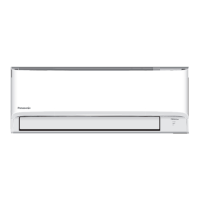
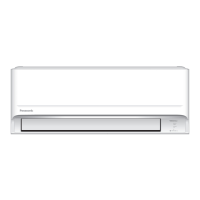
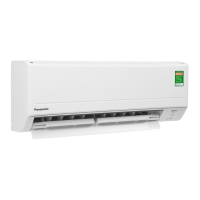
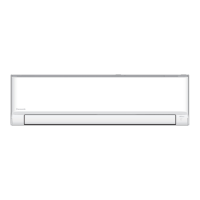
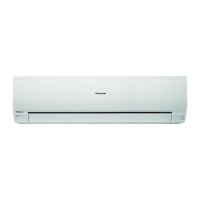
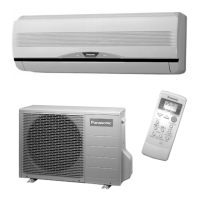
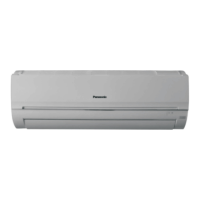
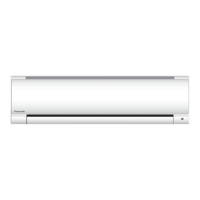
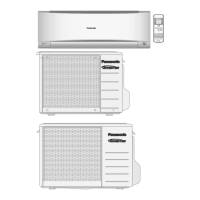
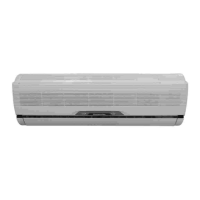
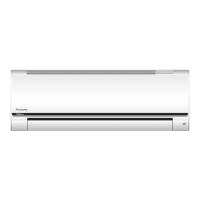
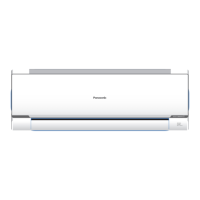
